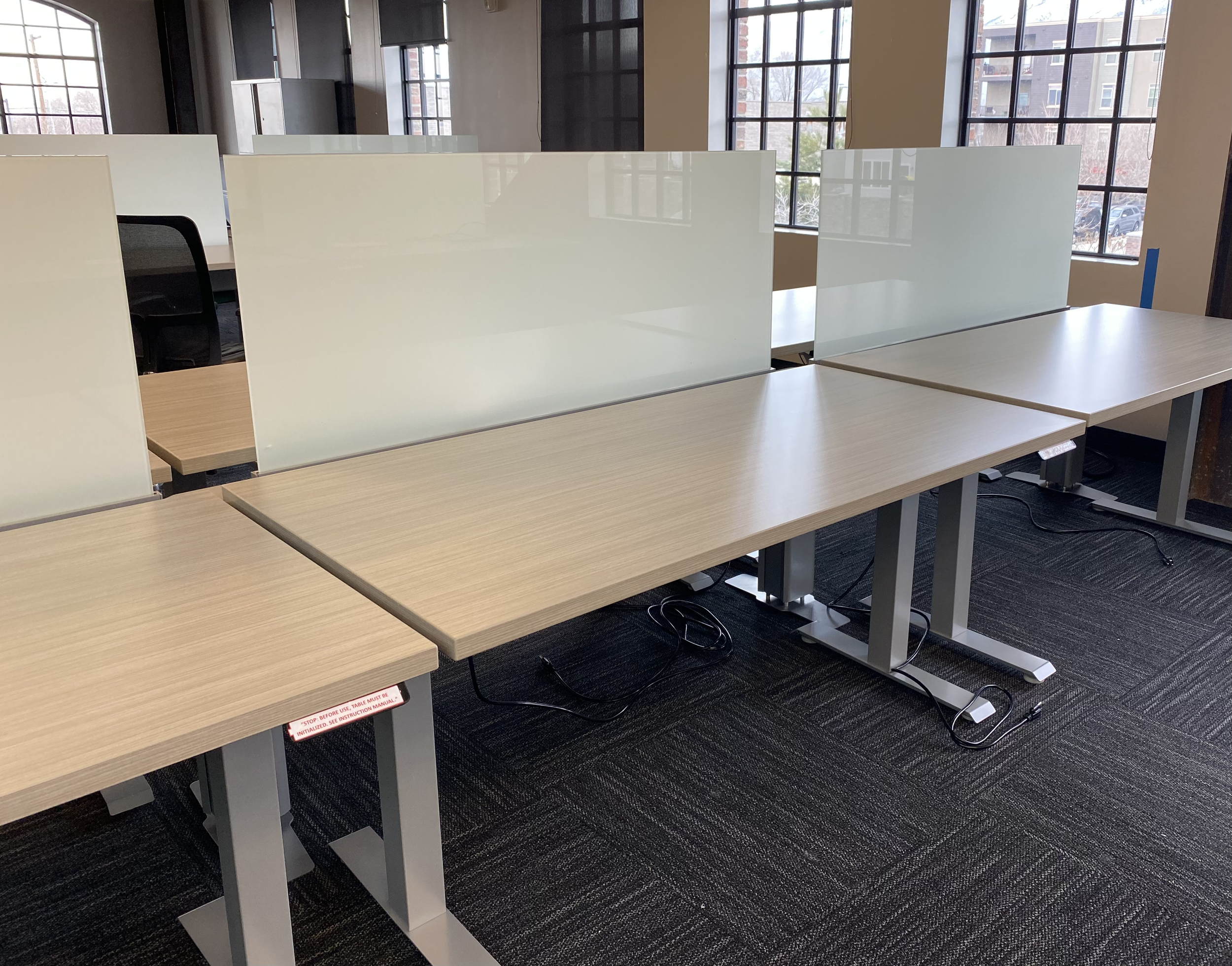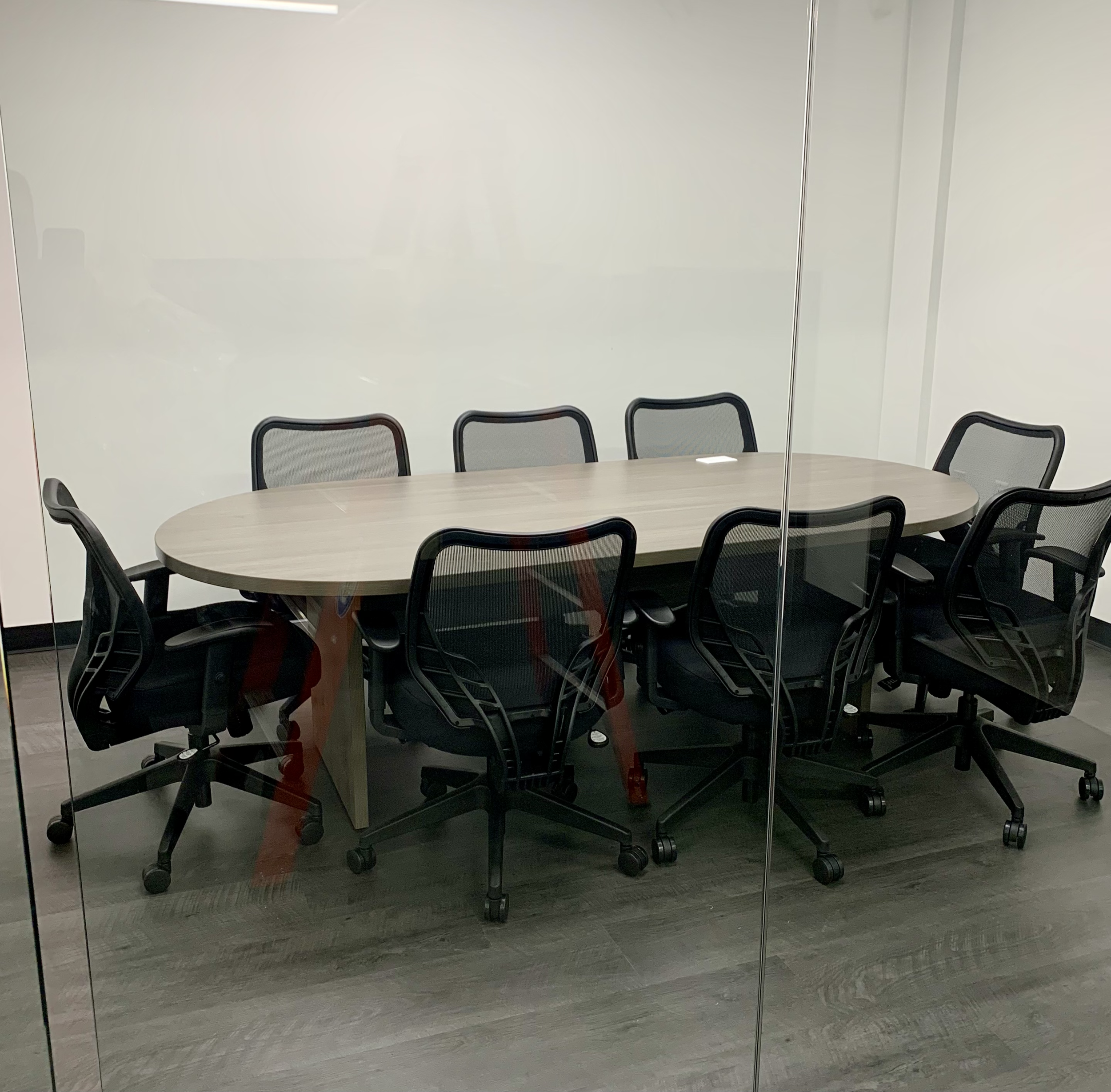The Right Office Furniture Can Supercharge Productivity
As organizations continue to rethink the modern workplace, the physical environment remains one of the most underestimated factors in employee performance. While high-speed internet and collaborative software often steal the spotlight, office furniture quietly plays a foundational role in how employees feel, focus, and function throughout the day. Choosing the right furniture isn’t just about aesthetics or filling space—it’s about creating an environment that supports movement, reduces strain, and eliminates distractions. When thoughtfully selected, pieces like standing desks, ergonomic chairs, and smart organization solutions can directly boost productivity in ways that are both immediate and long-lasting.
Standing desks installed by Jeff Lauder Cubes
Standing Desks: Movement Fuels Momentum
For decades, the traditional seated desk was the standard for office work. But growing research into the health consequences of prolonged sitting has helped usher in a new era of workplace ergonomics, with standing desks leading the charge. Far from being a fad, standing desks represent a shift toward dynamic work environments that adapt to the needs of modern workers.
Standing desks allow employees to alternate between sitting and standing throughout the day. This flexibility combats fatigue and the mid-afternoon energy slump that often accompanies long hours in a chair. When workers stand, blood circulation improves, muscles stay active, and alertness increases. This can translate to better focus, quicker decision-making, and a general feeling of momentum that can be hard to capture when glued to a chair all day.
Equally important is the psychological benefit. Standing while working can create a sense of urgency and action—perfect for tackling emails, joining virtual meetings, or working through quick problem-solving tasks. Many users also report that standing encourages shorter, more productive meetings and conversations. In sum, standing desks support both physical well-being and a faster-paced, more engaged work style.
Ergonomic chairs for a conference room installed by Jeff Lauder Cubes
Ergonomic Chairs: Comfort Is Not a Luxury
On the flip side, sitting isn’t inherently bad—it just needs to be done right. That’s where ergonomic chairs come in. A good ergonomic chair doesn’t just look sleek or feel plush; it actively supports the body in maintaining a healthy posture, minimizing strain on the spine, hips, and shoulders. When employees are supported, they’re less likely to fidget, get distracted by discomfort, or need frequent breaks to stretch out aching joints.
The best ergonomic chairs allow for adjustability across multiple points—seat height, lumbar support, armrests, tilt tension, and backrest angle. This adaptability is crucial because no two bodies are the same. When a chair can be tailored to an individual’s unique shape and needs, it fosters a sense of control and comfort, helping employees stay locked in on their work instead of being pulled out of the zone by backaches or wrist pain.
Additionally, the presence of high-quality chairs sends a subtle but powerful message: this is a workplace that values the health and longevity of its people. That matters. When workers feel cared for, morale improves—and when morale improves, productivity follows.
Smart storage options for documents, office supplies and three drawers in the attached storage cabinet. Installation by Jeff Lauder Cubes.
Organizational Tools: Clear Spaces, Clear Minds
Productivity isn’t just a matter of physical comfort; mental clarity is just as important. One of the quiet killers of workplace efficiency is clutter—both visual and mental. Papers stacked in disarray, cords tangled like spaghetti, or even an overstuffed drawer can create a low-level hum of stress and distraction that saps focus. A tidy space helps create a tidy mind.
Smart storage solutions—filing systems, drawer organizers, cable management, desktop risers, shelving units—aren’t just tools for cleanliness. They are systems for thinking clearly. When everything has its place, and that place is easy to access, employees don’t waste time hunting for files, supplies, or chargers. That adds up over the course of a day, a week, a quarter.
The benefits go deeper still. Organized workspaces reduce decision fatigue. The human brain can only process so many choices before it starts to slow down. Every time someone has to decide where to set their coffee or how to make room for a keyboard, it chips away at their cognitive bandwidth. But in a well-organized space, friction disappears. Employees can start their day fresh, focus deeply, and maintain that focus without the nagging sense that they’re working in chaos.
The Compounding Effect
Individually, standing desks, ergonomic chairs, and clutter-free workspaces each offer compelling productivity benefits. But together, they create an ecosystem where productivity isn’t forced—it’s the natural result of a thoughtfully designed environment. Movement is encouraged, physical pain is prevented, and mental clarity is preserved. The return on investment for these pieces is found not just in fewer sick days or better posture, but in sharper thinking, more creative output, and a team that’s mentally present from clock-in to clock-out.
In today’s work culture—where multitasking is rampant, distractions are ever-present, and stress is the norm—creating a workplace that feels calm, empowering, and physically supportive isn’t just a nice-to-have. It’s a competitive advantage.
Final Thought
At its core, office furniture should be more than just functional. It should support the rhythms of modern work—helping people move, think, and create at their best. Whether it’s a rising desk that adapts to energy levels, a chair that makes eight hours feel like three, or a shelving system that transforms chaos into calm, the right choices can pay dividends in employee output, satisfaction, and longevity.
Investing in the right office furniture isn’t about redesigning for design’s sake—it’s about enabling people to do their best work every day. And when that happens, everyone wins.



